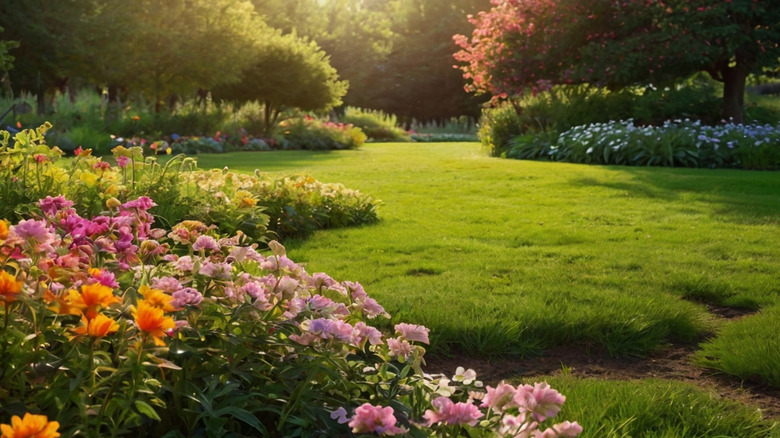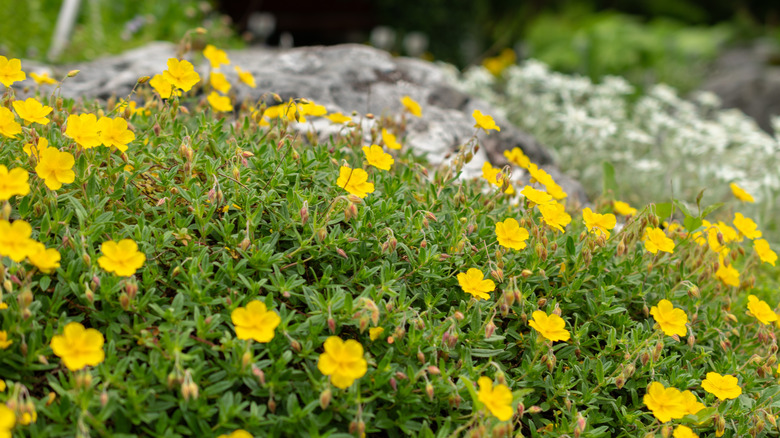Here's The Perfect Flowering Ground Cover For A Lush, Colorful Yard In No Time
Adding ground cover to your landscaping is a fantastic way to stay on top of weeds, define spaces, and add balance. If you are looking for a flowering ground cover, sunrose (Helianthemum nummularium) may be perfect for you. With its bright, playful blooms that come in an array of colors, it's a good grass alternative to grow a bright, beautiful, colorful yard. Sunroses flower from May to June. Its small flowers cover the plant, and its dense green leaves are tightly packed together to create a bed of color and texture for your yard. Each flower only blooms for a day; however, when the plant is happy and healthy, there will be a constant supply of blooms for you to enjoy.
Suitable for USDA hardiness zones 5 to 8, sunroses thrive in full sun and prefer a sandy or rocky soil environment. They need well-drained soil and can be drought tolerant once they settle in. Sunroses are low-lying plants, never reaching over 1 foot in height. However, they can spread to around 3 feet in the right conditions, which helps cover your yard quickly.
How to grow sunroses as ground cover
If you want to bring sunroses into your yard as ground cover, prepare your soil for successful planting beforehand by removing weeds and adding in a balanced fertilizer. If you have clay soil, you may want to incorporate some perlite or lava rock to improve the drainage and aeration. Ensure the location you are choosing for your sunroses will get plenty of sunshine, and plant them 2 to 3 feet apart for ground cover. Place them in a staggered or diamond pattern to ensure a good cover.
For the first year, water the sunroses regularly to help them establish themselves. They don't really need any fertilizer, and over-fertilizing them with nitrogen products can cause their stems to go limp. Cutting back the tops of the stems after blooming will help them produce more flowers, so keep your eyes out for any bedraggled-looking blooms over the summer months. A proper prune can be done in late summer to remove any long, leggy stems, but only do this every two or three years. You will need to overwinter your sunroses if you live in USDA hardiness zone 5 to protect them from extreme weather and help them to come back thriving in the springtime.

